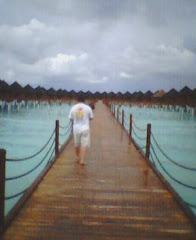We finally got some decent weather last week so I was able to do another neighborhood walk. Today, I went and checked out a place called Kanda Myojin. This walk was taken as a request from my mother. But since I haven't been there myself I was looking forward to checking it out. The nearest station to the shrine is Ochanomizu Station, another neighborhood I've been planning on walking around. Actually, there is a cd shop in Ochanomizu that specializes in hard rock / heavy metal and I've been planning to make a visit there as well since I haven't been in a long time, but that's another story.
先週やっと良い天気になって久しぶりに散歩の為に出かけました。今回の目的地は御茶ノ水の近くにある神田明神。自分の母のリクエストだったんで、自分も行った事ないから楽しみの散歩でした。お茶ノ水周辺の散歩も計画したんですがまだ実行してなかっただけ。僕は御茶ノ水でもう一つの楽しみがある。そこにハードロック・ヘビメタルのCD専門店があって、長い間行ってなかったので、近いうちにその店も行こうとしてたんです。ま、その話はまたにします。
First, got off the train at Ochanomizu station and walked across Hijiri Bridge.
御茶ノ水駅に降りて、ひじりばしを渡って、神田明神を目指す。
The view from Hijiri Bridge / ひじりばしからの眺め
It appears that this is birthplace of the new educational system.
A little history on Kanda Myojin as provided by the sign at the entrance:
Kanda Myojin was founded in 730 (the second year of the Tempyou era, or Tempyo 2). With its almost 1,300 years of history, the shrine is one of the oldest in Tokyo. Originally, it was located near the Masakado-zuka (Masakado Tomb) in Chiyoda-ku not far from the Imperial Palace. In 1309 (Enkei 2), Taira no Masakado (903?-940), a famous warrior hero of Eastern Japan was enshrined at Kanda Myojin. In 1603 (Keicho 8), when Shogun Tokugawa Ieyasu established his government in Edo (now Tokyo) and rebuilt Edo Castle on a larger scale, the shogunate moved the Kanda Shrine to its present site in order to guard against misfortune from entering the castle from the inauspicious Omote Kimon (Demon Gate) direction. Throughout the Edo period, many people both in the government and among the general public honored the shrine as the Tutelary Shrine of all Edo.
During the Meiji period (1868-1912), Kanda Myojin was named one of the ten shrines in Tokyo to which an Imperial emissary was sent on the occasion of festivals and was officially regarded as the guardian of the City of Tokyo and the Imperial Palace. In 1874, another deity, Sukunahiko-no-mikoto, who was originally worshipped at Oharai Isosaki Shrine in Ibaragi Prefecture, was enshrined as the second guardian deity of Kanda Myojin. It was also in this year that Emperor Meiji paid a personal visit to the shrine.
Following the destruction of the shrine complex in the Great Kanto Earthquake of 1923, the shrine buildings were rebuilt in Gogen style, but instead of the traditional wood, reinforced concrete was used, an innovation in shrine construction methods. The fire bombing of Tokyo in 1945 nearly destroyed the Kanda and Nihonbashi areas, but the shrine buildings survived with minimal damage.
After the war, the Zuishin Gate and other structures were rebuilt, restoring the shrine to its Edo-period grandeur as one of the most important and scenic shrines in Tokyo. In 1995, as part of the Heisei Grand Restoration Project, the shrine buildings were totally refurbished and a new museum was added to the complex. In 2005, further renovation work was carried out, and the new Hou-ou-den (Phoenix Hall) and the Soreisha (Shrine for Ancestral Spirits) were built.
Entrance to Kanda Myojin / 神田明神の入り口
Zuishin Gate / 隋神門
Kanda Myojin / 神田明神
The Hou-ou-den (Phoenix Hall) is located on the left / 左は鳳凰殿です
Main Shrine / 御神殿
Replica of the Mikoshi that is used in the Kanda Matsuri / 神田祭りに使用する神輿のレプリカ
Kouta Zuka & Kouta Sakushi Zuka / 小唄塚・小唄作詞塚
To be continued...
つづく。。。
Subscribe to:
Post Comments (Atom)













.jpg)



2 comments:
Where's the pony?! Hmph.
The shrine has gorgeous mikoshi. When I lived in Kanda, I loved participating in their big festival.
Please continue soon, and please remember the pony! :-)
No worries, I haven't forgotten the pony.
Post a Comment